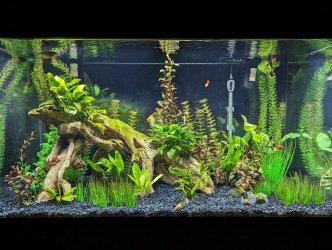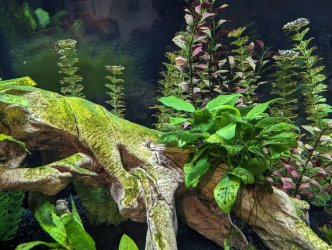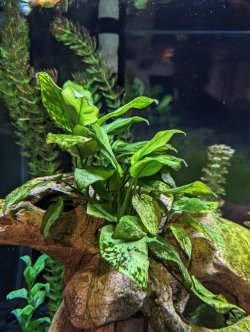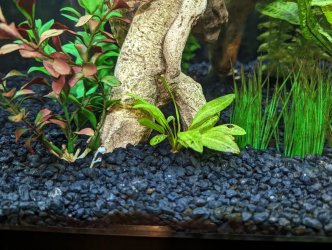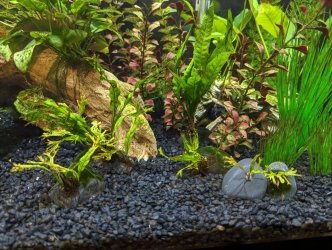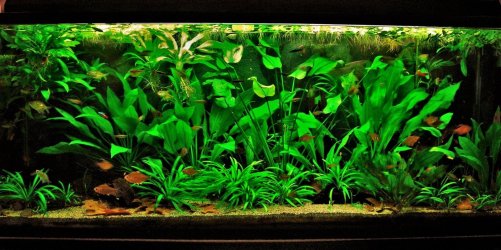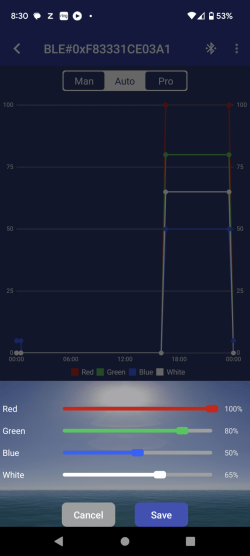I continue to struggle to grow Amazon Swords and Java Ferns successfully in my tank. Now granted I do purchase them in those tubes from Petco or PetSmart because I don't want snails. Anubias I can grow just fine. I know I didn't select the best substrate in the beginning but I'm not about to tear up the tank now to replace it. This is my 53 gallon tank. I have a Fluval AquaSky that runs for 8 hours a day, the tank does not get any sun light. I have a Fluval 307 canister for filtration and run the flow rate at 50%. My tank is not heavily stocked with fish, there are only 13 fish in here. I have probably a dozen live plants and a dozen fake plants. The two taller ferns you see were just put in last week.
I continue to battle algae, as you can see on the faux wood, the back glass, and plants. Every time I try Amazon Swords they dwindle down to nothing. I just started putting a root tab under each of them last week. My next question is around carbon and phosphate pads, I have them in my canister now but am wondering if they're taking nutrients out of the water column that the java ferns and anubias need, or perhaps they're not since algae is still thriving. Any help would be great on helping my existing ferns and swords thrive while managing algae. I know this isn't related but I'm sure it will be asked. Ammonia and Nitrites are 0ppm, Nitrates are 5ppm, PH is 8.0
Thanks in advance.
I continue to battle algae, as you can see on the faux wood, the back glass, and plants. Every time I try Amazon Swords they dwindle down to nothing. I just started putting a root tab under each of them last week. My next question is around carbon and phosphate pads, I have them in my canister now but am wondering if they're taking nutrients out of the water column that the java ferns and anubias need, or perhaps they're not since algae is still thriving. Any help would be great on helping my existing ferns and swords thrive while managing algae. I know this isn't related but I'm sure it will be asked. Ammonia and Nitrites are 0ppm, Nitrates are 5ppm, PH is 8.0
Thanks in advance.


